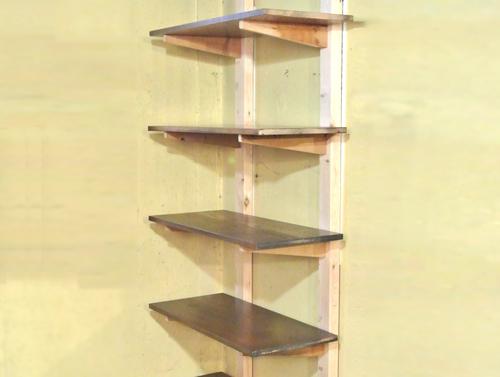 I have a few other articles about cantilevered shelves and
free standing storage shelves. But given
the right equipment for mortise and tenon joints, this type of shelf is the
quickest to build, and the most elegant looking.
I have a few other articles about cantilevered shelves and
free standing storage shelves. But given
the right equipment for mortise and tenon joints, this type of shelf is the
quickest to build, and the most elegant looking.
 I have a few other articles about cantilevered shelves and
free standing storage shelves. But given
the right equipment for mortise and tenon joints, this type of shelf is the
quickest to build, and the most elegant looking.
I have a few other articles about cantilevered shelves and
free standing storage shelves. But given
the right equipment for mortise and tenon joints, this type of shelf is the
quickest to build, and the most elegant looking.
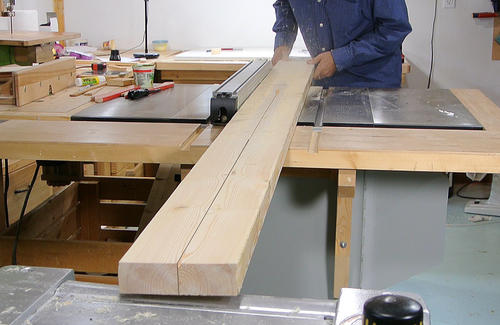
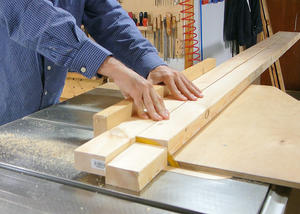 I started with a 2x6x8' and ripped it down the middle to get the uprights. I shortened
the pieces a bit using my table saw sled because the basement these are going into is
less than 8-feet (2.4m) high.
I started with a 2x6x8' and ripped it down the middle to get the uprights. I shortened
the pieces a bit using my table saw sled because the basement these are going into is
less than 8-feet (2.4m) high.
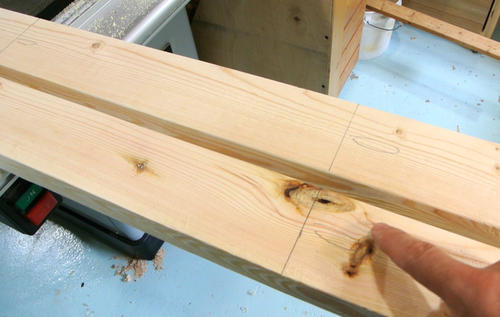 I marked a line every 34 cm (13.5") for where the shelves should go.
I also marked which side of the line the mortise should go, because it's all
too easy to cut on the wrong side of the line.
I marked a line every 34 cm (13.5") for where the shelves should go.
I also marked which side of the line the mortise should go, because it's all
too easy to cut on the wrong side of the line.
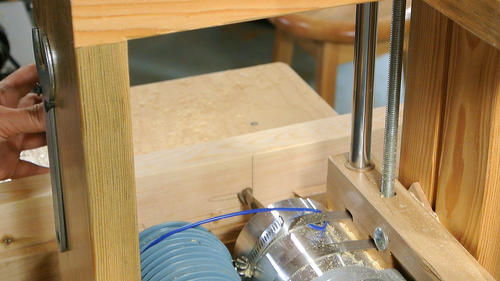 I lined the lines up with the bit on my slot mortiser,
with the mortiser's carriage pushed against the right stop.
I lined the lines up with the bit on my slot mortiser,
with the mortiser's carriage pushed against the right stop.
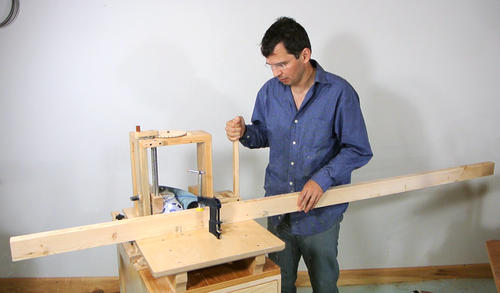
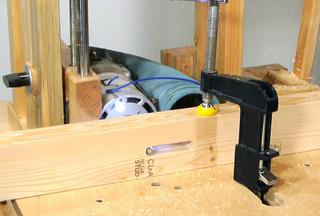 Mortising away at it. I made all the mortises through-mortises.
Mortising away at it. I made all the mortises through-mortises.
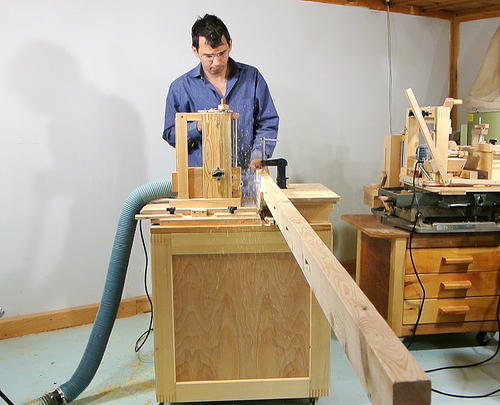 Lots of chips flying. Kind of fun to use.
Lots of chips flying. Kind of fun to use.
With the workpiece stationary and only the router moving, I don't have to worry about long stock putting too much strain on the table (like you would with mortisers where the workpiece is mounted to a sliding table)
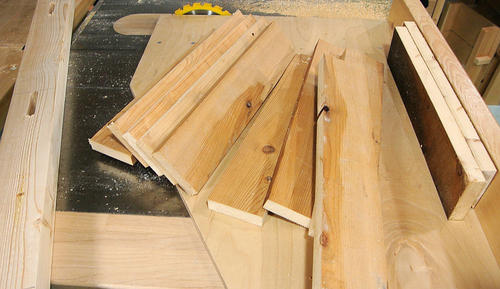 Next I cut the horizontal bits for the shelf supports. These were cut from scrap
wood I picked up from the garbage.
Next I cut the horizontal bits for the shelf supports. These were cut from scrap
wood I picked up from the garbage.
These pieces need to be tenoned to go into the mortises I just cut.
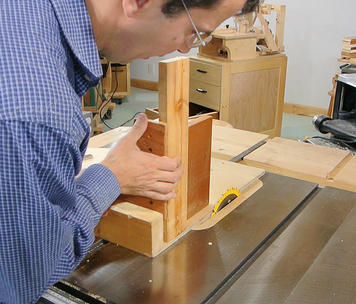
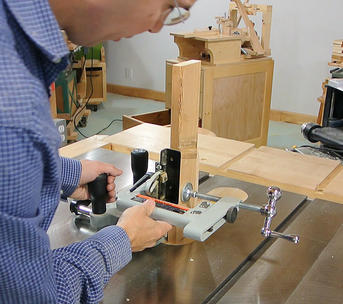 Most people use a tenoning jig for the tenons, and until I built my pantorouter I always did too.
Most people use a tenoning jig for the tenons, and until I built my pantorouter I always did too.
A tenon jig can be as simple as a box to put on a table saw sled (left), or could be a commercial tennoning jig (right), like the Delta tenon jig...
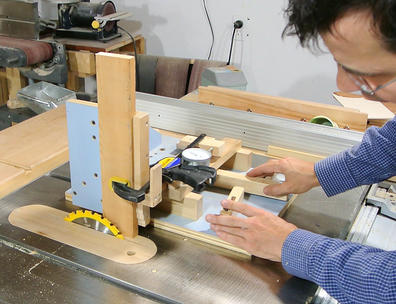 ... or you could make something fancier like my
quick-set tenon jig.
... or you could make something fancier like my
quick-set tenon jig.
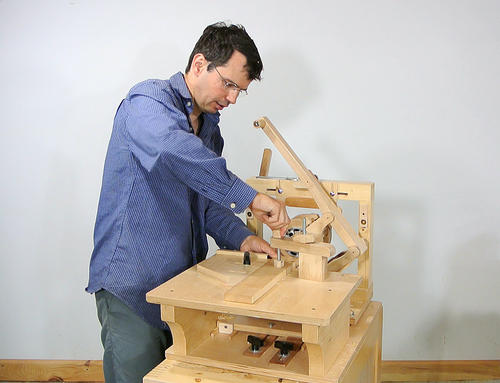 But I cut these tenon on my pantorouter.
The pantorouter is more complicated to set up because, for each new size of joint,
a template needs to be made.
But I cut these tenon on my pantorouter.
The pantorouter is more complicated to set up because, for each new size of joint,
a template needs to be made.
I wrote a separate short article about making the template I used here.
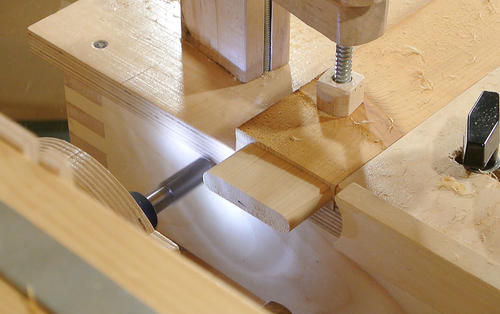
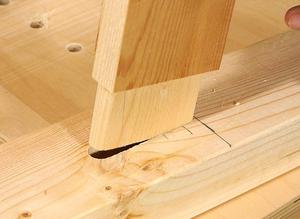 Tenon cut, with the ends already rounded.
Tenon cut, with the ends already rounded.
Checking the fit - just to make sure. Once set up, the tenons come out very consistent from this machine.
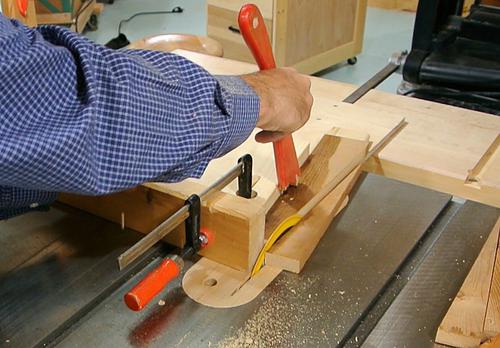
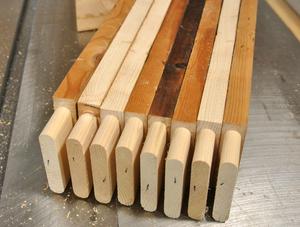 After that, I tapered all the shelf supports. My "tapering jig" is just a piece of 2x4,
clamped at a sight angle to the table saw sled.
I drilled a hole near the end to clamp it by, and cut the end of the 2x4 at the
appropriate angle.
After that, I tapered all the shelf supports. My "tapering jig" is just a piece of 2x4,
clamped at a sight angle to the table saw sled.
I drilled a hole near the end to clamp it by, and cut the end of the 2x4 at the
appropriate angle.
I'm using a push stick to hold down the stock as I cut it.
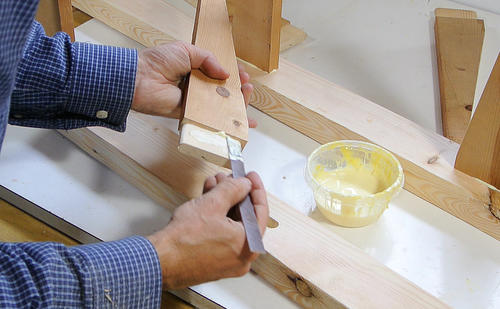 It's important to put glue on both the mortise and the tenon. Applying glue to just one
piece can result in a weak, glue starved, joint — as I discovered
in these tests. A slightly loose joint
on the other hand, can be quite strong so long as the gap is filled with glue.
It's important to put glue on both the mortise and the tenon. Applying glue to just one
piece can result in a weak, glue starved, joint — as I discovered
in these tests. A slightly loose joint
on the other hand, can be quite strong so long as the gap is filled with glue.
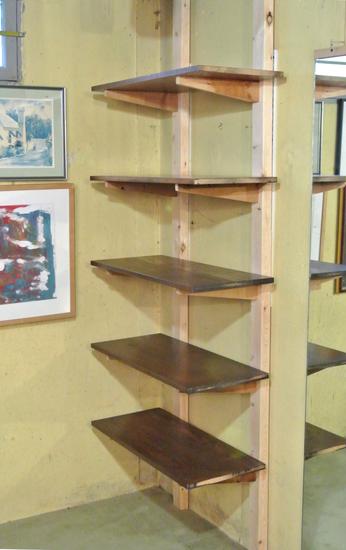
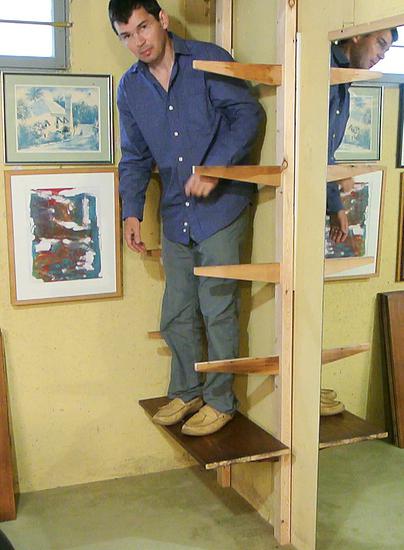 The finished shelves, in my brother's basement.
The finished shelves, in my brother's basement.
I used some particle board shelf pieces from a neighbour's bookcase that I helped him dismantle.
Strong enough to stand on.
I used the same approach to build my lumber rack
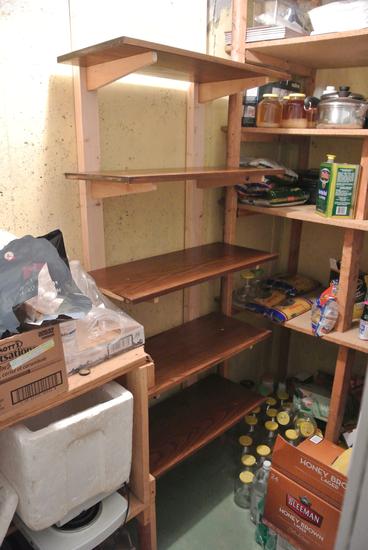 The final location for these shelves is a tiny storage room
in the basement, but I couldn't really photograph them in there,
which is why I test-set them up in a different corner first.
The final location for these shelves is a tiny storage room
in the basement, but I couldn't really photograph them in there,
which is why I test-set them up in a different corner first.
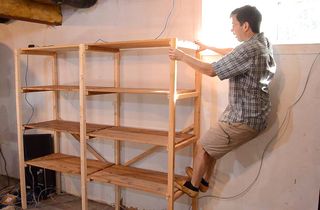 Yet another shelf build
This one with double mortise and tenon joints
Yet another shelf build
This one with double mortise and tenon joints